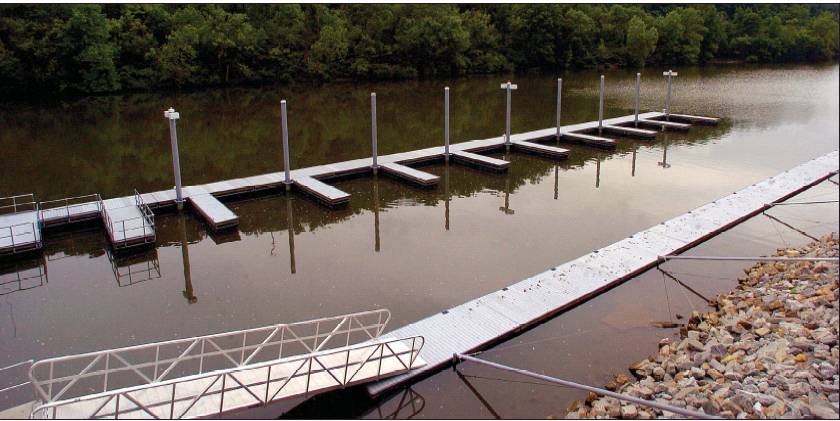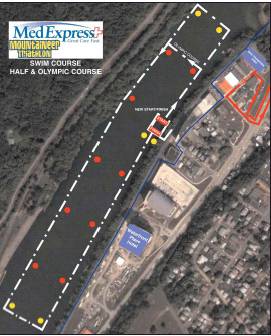
Morgantown Dominion Post
30 June 2007
By Cassie Shaner

Swimmers will enter this general area of the Monongahela River for the MedExpress Mountaineer Triathlon - Billy Wolfe/Dominion Post
A representative for the West Virginia Division of Natural Resources said the Monongahela River is perfectly safe for swimmers participating in Sunday's MedExpress Mountaineer Triathlon.
Frank Jernejcic, a DNR district fishery biologist, said he has been working in the river for 38 years and has never been sick as a result.
"I'm in this water as much as anybody," Jernejcic said. "I've never experienced any adverse effects."
Jernejcic said he has spent a great deal of time in the water - with cuts, puncture wounds and other fishing injuries.
"If you were to get an infection, I surely would have gotten it," he said.

Vinnie Monseau is a doctor at MedExpress and an avid triathlete. He is not directly affiliated with the triathlon and makes no profit from the race, but raised several concerns with a story Friday in the The Dominion Post. The story included water-test results from June 19 and 25, and statements from a WVU scientist indicating that readings for total coliform, or bacteria, and E. coli were abnormally high in some tests, particularly June 25.
The test results:
June 19: total coliform upstream (the entry and exit point), 500 MPN, meaning the most probable number of total bacteria found in 100 milliliters of water; midstream, greater than 1,600; and downstream (the former entry point, no longer being used), 900. E. coli upstream, 80, midstream, 30, downstream, 23. Scientists evaluating previous tests done by The Dominion Post were not concerned with the numbers under 1,600.
June 25: total coliform upstream, midstream and downstream, all greater than 1,600. E. coli upstream, 1,600, midstream, 4, downstream, 240.
The Dominion Post had an outdated map when it arranged for a test of the entry point. Swimmers will enter and exit the river at the same point, by the new docks in the Wharf District, near the upstream test location.
Monseau argued that the tests were not scientific and not statistically valid, a fact reported Friday. Typically, more tests are done over a longer span of time to get a better measure of possible pollutants. "As a scientist, I look at this and say, 'Where's the science?'" Monseau said.
He noted that E. coli is a common bacteria that people encounter daily. The Friday story reported that most strains of E. coli are harmless. However, some E. coli bacteria found in the intestines of humans and animals produce a powerful toxin, and can cause severe illness.
Jernejcic said, "It never enters my mind that I should be concerned about health problems from E. coli in these waters. I never am concerned with the bacteria levels. It's never affected me." Similar tests done by The Dominion Post before the 2006 triathlon showed the river was clean and safe, as reported June 23, 2006.
"If you had hard evidence that this race was not safe to swim in, you bet your bottom dollar we would do something about it," Monseau said. "Based on [Friday's] article, there's no reason to believe that it's not safe to swim in."
Jay Redmond, Greater Morgantown Convention and Visitors Bureau sports and special events director, said Thursday that "the biggest problem with the river is the perception of the river." Redmond said the quality of water in the Mon River has drastically improved since the passage of the Clean Water Act in 1977.
"The biological condition of that river is dramatically different than a decade ago," Redmond said.